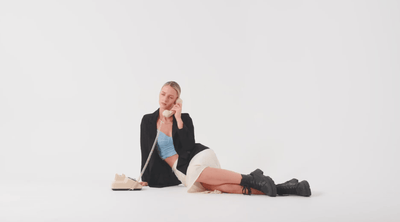The northern lights, or aurora borealis, are one of nature's most spectacular displays. This natural light show occurs when charged particles from the sun collide with the Earth's magnetic field, creating vibrant, dancing lights in the polar regions. But what if we could go beyond just seeing the northern lights? Could we also experience them through scent and sound?
The Science Behind the Sight
The northern lights are primarily seen in high-latitude regions around the Arctic and Antarctic. When solar wind — a stream of charged particles released from the sun — reaches Earth, it interacts with the Earth’s magnetic field. These interactions cause energy releases in the form of light, creating the stunning colors we see. The most common colors are green, pink, red, yellow, blue, and violet, each corresponding to different types of gas particles. Oxygen produces green and red lights, while nitrogen creates blue and purple hues.
Can We Smell the Northern Lights?
Some reports suggest that the aurora borealis can produce a distinct odor.
Historical accounts describe the electromagnetic activity of the aurora affecting telegraph systems. This activity could potentially release ozone or other ionized particles into the atmosphere. Ozone is a molecule composed of three oxygen atoms, and it’s often associated with the smell after a thunderstorm, where electrical discharges create similar ionization. Observers have reported a faint smell of ozone during intense displays, similar to the scent following a storm, suggesting a possible link between auroral activity and atmospheric ionization. Scientific evidence directly linking this to the northern lights is limited, and such accounts remain largely anecdotal.
To some, the electrical activity generated by the northern lights might create smells similar to burnt leaves, scorched barbeque, or fried garlic. This phenomenon is thought to result from the ionization processes in the atmosphere. The presence and strength of these odors can vary depending on wind direction and atmospheric conditions, potentially carrying these smells to or away from your location.
Additionally, anecdotal evidence has suggested that the electrical activity from the aurora can generate odors similar to scorched wood and paint, akin to a heavy current passing between two metal points nearly in contact. These scents are thought to be produced by the ionization of atmospheric particles.
The Sounds of the Aurora
For many years, the northern lights were thought to be a purely visual phenomenon. However, some observers have reported hearing sounds associated with the aurora, such as faint crackling, hissing, or popping noises. These sounds have been a popular topic of debate among scientists.
Recent research suggests that these sounds are real and may be caused by the interaction between the Earth's magnetic field and atmospheric particles. When solar particles collide with the magnetic field, they create electromagnetic waves that can travel through the atmosphere. Under certain conditions, these waves may create audible sounds when they reach the ground.
In 2012, a Finnish study recorded these sounds using sensitive audio equipment. The researchers concluded that the noises likely originate around 230 feet above the ground, correlating with intense auroral displays. However, the precise mechanisms behind these sounds are still not fully understood, and more research is needed to confirm these findings.
Experiencing the Aurora Borealis
To fully experience the northern lights, one should ideally be in a remote, dark location far from city lights. Common places to witness this phenomenon include Norway, Sweden, Finland, Iceland, Canada, and Alaska. The best time to see the northern lights is during the winter months, when the nights are longest and the skies are clear.
While we may not be able to bottle the exact scent or sound of the northern lights, we can appreciate the multi-sensory experience they offer. The crisp air, the natural scents of the Arctic, and the potential for hearing the auroral sounds add layers to this incredible natural spectacle. As science continues to explore these phenomena, we may one day have a deeper understanding of how we can perceive and appreciate the northern lights through more than just our eyes.
Conclusion
At Lèlior, we're on a mission to blend science and scent with our ‘Make Sense of Scents’ series, reaching as far as the Arctic to explore the northern lights. Picture the dazzling lights above, the cold air carrying the aroma of ozone and ionized particles, and the soft crackle of electromagnetic waves creating a unique soundtrack. While we can't encapsulate the northern lights in a bottle, we revel in the sensory adventure that this celestial night show promises.








